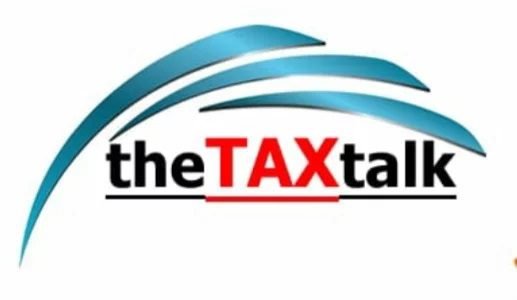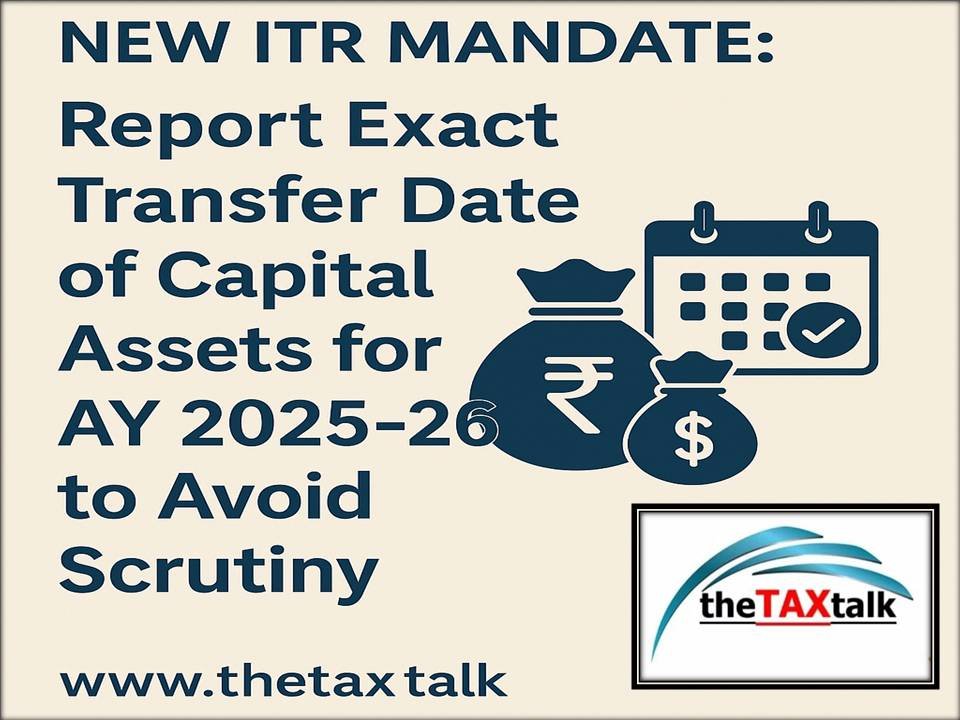![]()
NEW ITR MANDATE: Report Exact Transfer Date of Capital Assets for AY 2025–26 to Avoid Scrutiny
In a significant move to tighten capital gains reporting and curb evasion, the Income Tax Department has mandated disclosure of the exact transfer date of each capital asset in the Income Tax Return (ITR) forms for Assessment Year (AY) 2025–26. This change is particularly relevant for taxpayers reporting capital gains on the sale of shares, mutual funds, property, and other assets.
This new rule aims to bring consistency and accuracy by segregating gains based on whether the sale occurred before or after July 25, 2024-a key date that divides the old and new taxation regimes in the revised ITR schema.
Why Is the Exact Transfer Date Crucial in AY 2025–26?
The revised ITR forms (notably ITR-2 and ITR-3) require you to segregate and report capital gains transactions based on the holding period and exact sale date. Depending on whether the sale occurred before or after July 25, 2024, the applicable tax rates and loss carry forward eligibility may differ.
For example:
• Listed equity shares & equity mutual funds: STCG taxed at 15%, LTCG at 10% (if gains exceed ₹1 lakh)
• Debt mutual funds: Fully taxable as per slab rates, regardless of holding period
• Other assets (real estate, gold, etc.): LTCG taxed at 20% with indexation
Split Gains by Date:
Gains must be split as follows:
• Sale before July 25, 2024→ Old tax treatment
• Sale after July 25, 2024→ New rules apply, and loss carry-forward may differ
Common Mistakes to Avoid
1. Wrong ITR Form Selection:
• Use ITR-2 or ITR-3if you have capital gains.
• Avoid ITR-1 or ITR-4 if you are reporting capital gains from shares or mutual funds.
2. Incorrect Capital Gain Segregation:
• Taxpayers often club short-term and long-term gains. The new format requires precise classificationwith transfer date, ISIN, quantity, and cost of acquisition.
3. Wrong FIFO Method:
• The First-In-First-Out (FIFO)rule applies to share and mutual fund sales. This means that the oldest units acquired are deemed to be sold first, affecting holding period and taxability.
Action Points for Taxpayers
• Download and reconcileyour AIS, TIS, and Form 26AS with broker and mutual fund statements.
• Track and enter the exact date of purchase and salefor every transaction.
• Use portfolio statements or capital gains reportsfrom brokers for accuracy.
• Segregate pre-July 25 and post-July 25
• Match the quantity sold with the earliest units acquired to comply with FIFO.
Expert Tip
“Failing to report the exact date of transfer may lead to mismatches, inaccurate tax calculation, and possible scrutiny or notices,” cautions tax professionals. Also, taxpayers claiming capital loss carry-forward must ensure their transactions fall within the eligible period to claim it.
Conclusion
The new reporting mandate under AY 2025–26 is a clear signal that the Income Tax Department is moving towards data triangulation and stricter compliance. Taxpayers must ensure accuracy in the date-wise reporting of each capital asset to avoid triggering automated notices or scrutiny.
Incorrect reporting may lead to denial of capital loss set-off, higher tax outgo, or scrutiny notices. It’s advisable to consult your tax advisor or CA while filing ITRs this year.


